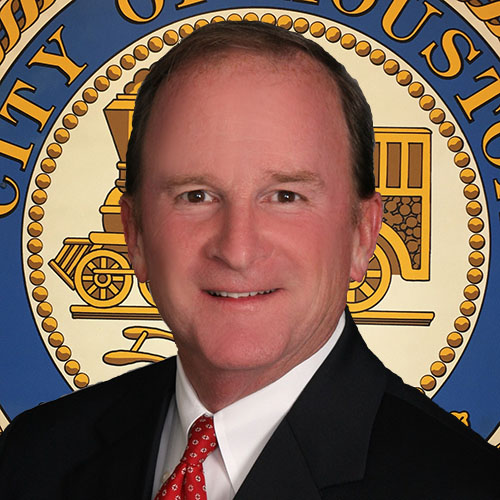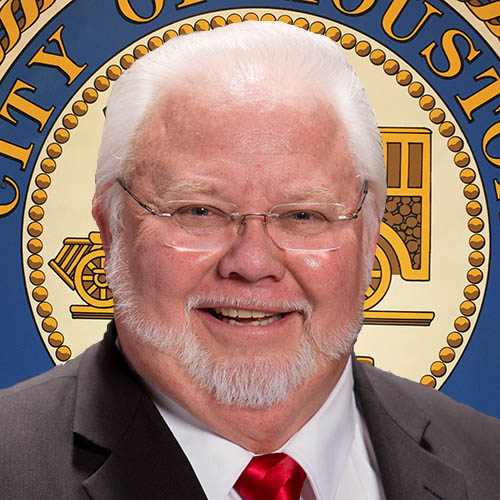PREVIOUSLY
Beto versus Abbott
Beto versus the spread
Hidalgo versus Mealer
Better statewide races
The difference between these statewide races and the ones we have already looked at, including the Governor’s race, is very simple: These Republican candidates did better than the ones we have seen, and the Democrats did less well. The Dems in the first four races we analyzed all topped 53% of the vote in Harris County. The high score with these three is Jay Kleberg’s 51.11%. Luke Warford, who had a Green opponent as well as a Libertarian opponent, fell short of a majority in Harris County, getting 49.95% for a plurality. Let’s see how this breaks down.
Comptroller
Dist Hegar Dudding Lib
==============================
HD126 36,931 21,555 1,269
HD127 40,053 24,746 1,441
HD128 32,350 12,795 1,014
HD129 38,119 24,936 1,559
HD130 46,320 18,701 1,229
HD131 6,114 24,275 906
HD132 36,340 23,387 1,259
HD133 35,123 24,187 1,043
HD134 32,915 46,611 1,330
HD135 17,107 22,475 1,135
HD137 8,263 12,428 646
HD138 32,580 23,012 1,269
HD139 12,325 30,301 1,174
HD140 5,761 12,183 1,066
HD141 4,586 20,094 815
HD142 8,957 24,548 997
HD143 8,538 14,611 1,218
HD144 11,734 13,368 1,167
HD145 13,855 29,642 1,839
HD146 9,031 32,118 953
HD147 9,676 35,412 1,338
HD148 16,203 19,567 1,251
HD149 12,278 18,681 882
HD150 34,841 21,318 1,294
CC1 72,584 195,779 6,893
CC2 97,146 99,729 7,605
CC3 225,304 134,394 7,641
CC4 114,966 121,049 5,955
JP1 65,832 117,292 5,140
JP2 22,125 28,127 2,055
JP3 35,715 40,576 2,117
JP4 173,366 120,182 6,806
JP5 146,733 136,478 6,730
JP6 5,130 16,223 1,342
JP7 12,325 64,437 1,904
JP8 48,774 27,636 2,000
Dist Hegar% Dudding% Lib%
==============================
HD126 61.80% 36.07% 2.12%
HD127 60.47% 37.36% 2.18%
HD128 70.08% 27.72% 2.20%
HD129 58.99% 38.59% 2.41%
HD130 69.92% 28.23% 1.86%
HD131 19.54% 77.57% 2.90%
HD132 59.59% 38.35% 2.06%
HD133 58.20% 40.08% 1.73%
HD134 40.71% 57.65% 1.64%
HD135 42.01% 55.20% 2.79%
HD137 38.73% 58.25% 3.03%
HD138 57.30% 40.47% 2.23%
HD139 28.14% 69.18% 2.68%
HD140 30.31% 64.09% 5.61%
HD141 17.99% 78.82% 3.20%
HD142 25.96% 71.15% 2.89%
HD143 35.04% 59.96% 5.00%
HD144 44.67% 50.89% 4.44%
HD145 30.56% 65.38% 4.06%
HD146 21.45% 76.29% 2.26%
HD147 20.84% 76.28% 2.88%
HD148 43.77% 52.85% 3.38%
HD149 38.56% 58.67% 2.77%
HD150 60.64% 37.11% 2.25%
CC1 26.37% 71.13% 2.50%
CC2 47.51% 48.77% 3.72%
CC3 61.33% 36.59% 2.08%
CC4 47.51% 50.03% 2.46%
JP1 34.97% 62.30% 2.73%
JP2 42.30% 53.77% 3.93%
JP3 45.55% 51.75% 2.70%
JP4 57.72% 40.01% 2.27%
JP5 50.61% 47.07% 2.32%
JP6 22.60% 71.48% 5.91%
JP7 15.67% 81.91% 2.42%
JP8 62.20% 35.25% 2.55%
Land Commissioner
Dist Buck Kleberg Grn W-I
====================================
HD126 36,849 21,629 1,070 1
HD127 40,131 24,789 1,092 0
HD128 32,446 12,873 706 9
HD129 38,169 25,015 1,149 3
HD130 46,145 18,886 963 5
HD131 6,081 24,219 829 1
HD132 36,155 23,542 1,053 2
HD133 34,565 24,654 915 2
HD134 31,902 47,475 1,190 6
HD135 17,116 22,492 963 1
HD137 8,141 12,532 562 2
HD138 32,324 23,310 968 2
HD139 12,258 30,317 1,025 1
HD140 5,859 12,433 613 3
HD141 4,635 20,039 691 3
HD142 8,984 24,532 839 4
HD143 8,646 14,845 732 5
HD144 11,869 13,567 682 4
HD145 13,820 30,044 1,276 3
HD146 8,914 32,076 990 0
HD147 9,684 35,282 1,243 1
HD148 16,142 19,762 959 2
HD149 12,314 18,717 714 0
HD150 34,884 21,411 1,016 3
CC1 71,640 196,243 6,241 17
CC2 97,762 100,816 4,930 24
CC3 224,673 135,288 6,151 14
CC4 113,958 122,094 4,918 8
JP1 64,874 118,648 3,973 11
JP2 22,268 28,432 1,306 7
JP3 35,847 40,620 1,612 8
JP4 173,174 120,696 5,428 13
JP5 145,487 137,664 5,652 10
JP6 5,253 16,428 881 4
JP7 12,214 64,137 2,011 2
JP8 48,916 27,816 1,377 8
Dist Buck% Kleberg% Grn% W-I%
====================================
HD126 61.88% 36.32% 1.80% 0.00%
HD127 60.79% 37.55% 1.65% 0.00%
HD128 70.48% 27.96% 1.53% 0.02%
HD129 59.33% 38.88% 1.79% 0.00%
HD130 69.92% 28.62% 1.46% 0.01%
HD131 19.53% 77.80% 2.66% 0.00%
HD132 59.51% 38.75% 1.73% 0.00%
HD133 57.48% 41.00% 1.52% 0.00%
HD134 39.59% 58.92% 1.48% 0.01%
HD135 42.19% 55.44% 2.37% 0.00%
HD137 38.33% 59.01% 2.65% 0.01%
HD138 57.11% 41.18% 1.71% 0.00%
HD139 28.11% 69.53% 2.35% 0.00%
HD140 30.99% 65.76% 3.24% 0.02%
HD141 18.27% 78.99% 2.72% 0.01%
HD142 26.15% 71.40% 2.44% 0.01%
HD143 35.69% 61.27% 3.02% 0.02%
HD144 45.44% 51.94% 2.61% 0.02%
HD145 30.61% 66.55% 2.83% 0.01%
HD146 21.23% 76.41% 2.36% 0.00%
HD147 20.96% 76.35% 2.69% 0.00%
HD148 43.79% 53.61% 2.60% 0.01%
HD149 38.79% 58.96% 2.25% 0.00%
HD150 60.86% 37.36% 1.77% 0.01%
CC1 26.13% 71.58% 2.28% 0.01%
CC2 48.03% 49.53% 2.42% 0.01%
CC3 61.36% 36.95% 1.68% 0.00%
CC4 47.29% 50.67% 2.04% 0.00%
JP1 34.60% 63.28% 2.12% 0.01%
JP2 42.81% 54.66% 2.51% 0.01%
JP3 45.91% 52.02% 2.06% 0.01%
JP4 57.86% 40.32% 1.81% 0.00%
JP5 50.37% 47.67% 1.96% 0.00%
JP6 23.28% 72.80% 3.90% 0.02%
JP7 15.59% 81.84% 2.57% 0.00%
JP8 62.62% 35.61% 1.76% 0.01%
Railroad Commissioner
Dist Chris Warford Lib Grn
======================================
HD126 36,287 21,192 1,384 648
HD127 39,533 24,297 1,535 651
HD128 32,057 12,551 995 399
HD129 37,473 24,455 1,607 766
HD130 45,640 18,396 1,369 597
HD131 5,986 23,853 942 400
HD132 35,684 22,981 1,395 627
HD133 34,391 23,900 1,215 616
HD134 31,677 46,420 1,533 844
HD135 16,804 21,988 1,227 559
HD137 8,017 12,261 612 350
HD138 31,928 22,708 1,350 641
HD139 12,044 29,784 1,169 555
HD140 5,685 11,976 991 277
HD141 4,527 19,765 784 332
HD142 8,851 24,073 1,025 411
HD143 8,457 14,290 1,159 373
HD144 11,679 13,015 1,125 328
HD145 13,535 29,065 1,855 677
HD146 8,716 31,720 927 581
HD147 9,406 34,678 1,363 730
HD148 15,938 19,168 1,217 514
HD149 12,101 18,269 925 429
HD150 34,404 20,882 1,366 623
CC1 70,449 192,875 7,107 3,563
CC2 95,951 97,604 7,402 2,627
CC3 221,887 132,181 8,202 3,726
CC4 112,533 119,027 6,359 3,012
JP1 63,938 115,819 5,264 2,359
JP2 21,846 27,531 2,021 648
JP3 35,348 39,739 2,132 865
JP4 170,806 118,025 7,219 3,145
JP5 143,838 134,221 7,231 3,484
JP6 5,019 15,850 1,277 447
JP7 11,907 63,400 1,926 1,109
JP8 48,118 27,102 2,000 871
Dist Chris% Warford% Lib% Grn%
======================================
HD126 60.98% 35.61% 2.33% 1.09%
HD127 59.88% 36.80% 2.33% 0.99%
HD128 69.69% 27.28% 2.16% 0.87%
HD129 58.28% 38.03% 2.50% 1.19%
HD130 69.15% 27.87% 2.07% 0.90%
HD131 19.20% 76.50% 3.02% 1.28%
HD132 58.80% 37.87% 2.30% 1.03%
HD133 57.20% 39.75% 2.02% 1.02%
HD134 39.36% 57.68% 1.90% 1.05%
HD135 41.41% 54.19% 3.02% 1.38%
HD137 37.74% 57.73% 2.88% 1.65%
HD138 56.38% 40.10% 2.38% 1.13%
HD139 27.65% 68.39% 2.68% 1.27%
HD140 30.03% 63.27% 5.24% 1.46%
HD141 17.82% 77.79% 3.09% 1.31%
HD142 25.76% 70.06% 2.98% 1.20%
HD143 34.83% 58.86% 4.77% 1.54%
HD144 44.67% 49.78% 4.30% 1.25%
HD145 29.99% 64.40% 4.11% 1.50%
HD146 20.78% 75.62% 2.21% 1.39%
HD147 20.37% 75.10% 2.95% 1.58%
HD148 43.27% 52.03% 3.30% 1.40%
HD149 38.14% 57.59% 2.92% 1.35%
HD150 60.07% 36.46% 2.38% 1.09%
CC1 25.71% 70.39% 2.59% 1.30%
CC2 47.13% 47.94% 3.64% 1.29%
CC3 60.63% 36.12% 2.24% 1.02%
CC4 46.71% 49.40% 2.64% 1.25%
JP1 34.12% 61.81% 2.81% 1.26%
JP2 41.97% 52.90% 3.88% 1.25%
JP3 45.27% 50.89% 2.73% 1.11%
JP4 57.09% 39.45% 2.41% 1.05%
JP5 49.81% 46.48% 2.50% 1.21%
JP6 22.21% 70.15% 5.65% 1.98%
JP7 15.20% 80.93% 2.46% 1.42%
JP8 61.62% 34.71% 2.56% 1.12%
Not too surprisingly, what we see in all three of these races is…more votes for the Republican candidate and fewer votes for the Democrat across the precincts, with a couple of exceptions here and there. The effect was generally stronger in the Republican districts than in the Democratic ones, with HDs 133 and 134 being the most notable.
The total number of votes in these elections is comparable – the number declines gently as you go down the ballot, but more undervoting does not explain the shifts in percentages. In a few cases you can see a greater number of third-party votes, which can explain a part of a Democratic vote decline, but again the overall effect is too small to be generally explanatory. The only logical conclusion is that across the board, some number of people who votes for Beto and Collier and Garza and Hays also voted for Glenn Hegar and Dawn Buckingham and Wayne Christian.
The question then is why. To me, the most likely explanation is that the most visible Republicans, the ones most likely to loudly and visibly stake out unpopular and divisive positions – and yes, this means “unpopular”, or at least “less popular” with Republicans, with opposing marijuana reform and expanded gambling and rape/incest exceptions for abortion – are losing votes that their lower profile/less visibly extreme colleagues are not losing.
This makes sense to me, but as it agrees with my priors, I’d like to check it. I’m pretty sure I’ve expressed this sentiment before, but if I had the power and the funds I’d order a study, to try to identify these voters and ask them why they did what they did. Not out of disbelief or derision but curiosity, to get a better understanding. Maybe other Democratic candidates could get them with the right message, and if they were the right candidates. Maybe they just didn’t know enough about the Dems in these races to be in a position to consider them. Maybe a strategy that attempts to maximize Democratic turnout overall – we have already discussed how Dems fell short in this election on that front – would make them less likely to cross over, even for Republicans they don’t approve of. We can speculate all week, but there’s only one way to find out. I really wish I could make that happen.
One more thing to note is that despite the lesser Democratic performance, these candidates all still carried the three Commissioner Court precincts that are now Democratic. I’ll be paying closer attention to these precincts, because this isn’t always the case going forward. In the meantime, let me know what you think.



















